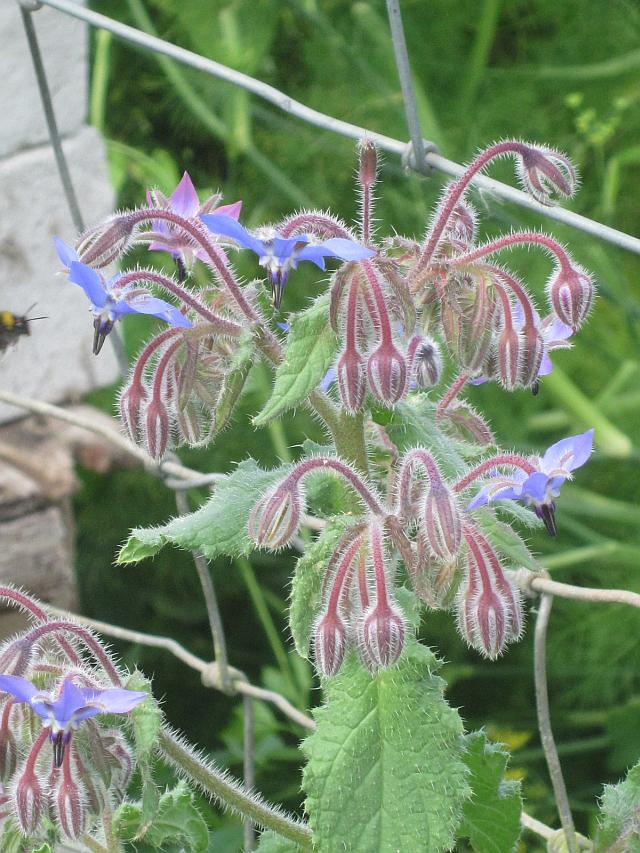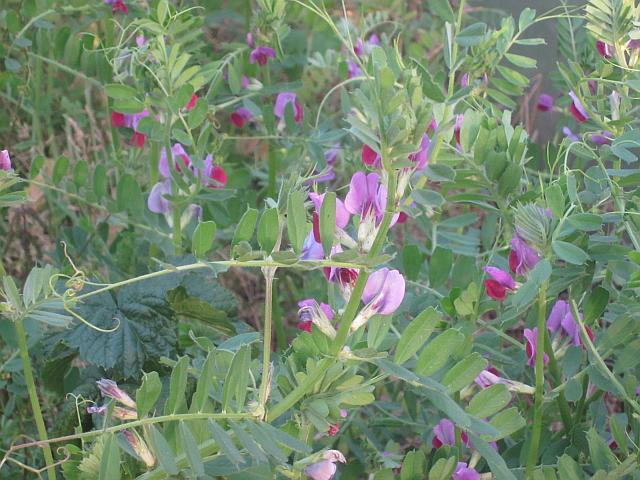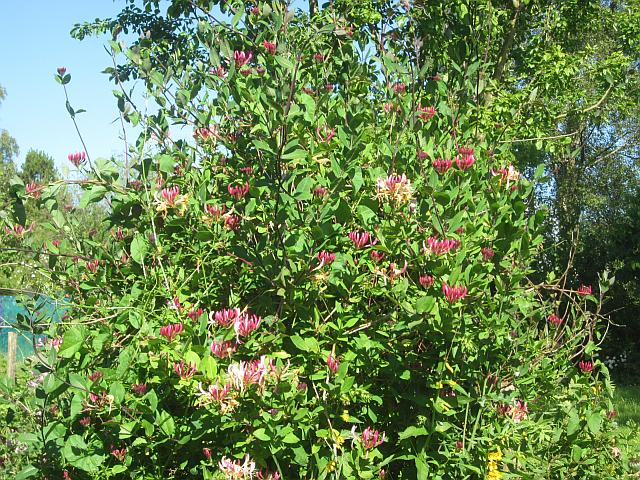It's not all grim rows of vegetables in the veggie plot.
Some flowering plants are allowed or even encouraged.
Why would this be? One key reason is that every
flowering plant is a source of nectar and therefore food for bees,
which will visit your garden and pollinate your vegetable flowers. So no
flowering plant is a complete waste of space in the veggie
plot.
Going further, permaculture has the idea that all the elements
of a design should have 3 functions if possible. Nasturtiums are a good example in the veg
garden.

They are rampant in the garden from now until the first
frost. Insects love them. At the first frost they
dissolve into a slimy heap but their seedlings re-appear again like
magic in the spring. They need no maintenance except the
removal of the excess plants. Nasturtiums are also edible! Their
flowers can be used as a garnish and the leaves as a peppery addition to salads. Some texts mention
the idea of pickling the unripe seed pods as a replacement for
capers. They are also considered to be a good companion plant in that they repel some pests
of our food plant crops. More obviously, in my garden, I see
that they can be a decoy or 'trap' plant to attract the cabbage white butterfly which will lay its eggs
on the nasturtium and not on my cabbages and broccoli.
Nasturtiums deserve their place in the veg plot.

Borage is another bee-attractant. This plant is a
beast. It is an annual that can grow 4 feet high with masses of
blue flowers. It is also a wonderful self-seeder but
fortunately is shallow rooted and can be removed, or transplanted,
when not wanted. The leaves and flowers of borage are edible, leaves said to be
cucumber-like and the flowers peppery. The third use for
borage is medicinal. One source says it has 'a beneficial effect on the
heart, adrenal glands, kidneys and the entire digestive system' and
another that it is a stress reliever.
Any other uses for pretty flowers? The legume family
are plants that bear their seeds in pods. They include the
peas and beans but also vetches (see picture), clovers and trefoils
and lupins.

These plants host bacteria in nodules on their roots that pull nitrogen from the air and fix it into the
soil. Nitrogen happens to be a plant nutrient of supreme importance.
Using legumes can reduce the need to convert petroleum based fossils
fuels into industrial nitrogen which is applied to farmland and
then washed into watercourses. Like it or not, the sustainability of all future agriculture might
depend on the planting of the legumes (and we have to eat more
beans).
Another reason to grow some pretty things is to support bio-diversity. A quiet, or otherwise
unproductive, corner of the veg garden might support ox-eye daisy or red campion or foxglove. These plants are
regarded as weeds and have been driven out of our native meadows,
woods and hedges, but support our native wildlife.

Finally some flowering plants can be used to physically alter
growing conditions in the veggie plot. Maybe you need some
shelter from the wind? If a hedge is the solution then maybe
a flowering hedge, perhaps honeysuckle, is a good choice. There's
nothing quite like the scent of honeysuckle on a summer's evening
and it's beneficial to wildlife too.

Look for more ideas on the 'net!